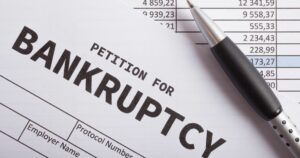If you are considering bankruptcy, planning is essential. The actions you take, weeks and even months before you file, could dramatically impact the outcome of your case. Regardless of how bad your financial situation is, the more steps you take ahead of time, the better the outcome will be for your case – and the more likely you will have a smooth bankruptcy.
Step One: Know the Automatic Stay Rules
When you file for bankruptcy, the courts grant you an automatic stay immediately. The stay prevents creditors from collecting on debts against you. However, creditors can still take money even after you have filed for bankruptcy. Also, realize that while lenders are supposed to honor the automatic stay, very few do. Sometimes it takes several weeks for them to stop calling once the automatic stay begins.
Step Two: Consider Moving Funds
If you have multiple accounts with one bank, and you plan to file for bankruptcy on loans with that bank, the bank has the right to offset the loans. Offsets mean that the financial institution takes funds from your bank account to pay down debts owed to that bank on the date of your filing.
To prevent yourself from losing your funds, consider moving them to another bank before filing so that you do not lose those funds in an offset.
Step Three: Utility Company Offsets Happen Too
Like your bank accounts, the security deposits given to utility companies, like gas and electric, can be subject to the same offset principle. Therefore, if you file for bankruptcy, the company can still use the funds from your security deposit to cover that debt. Then, that utility company may require you to post a new deposit amount if the entire deposit has depleted.
Step Four: Stop All Automatic Payments
Before you file for bankruptcy, stop all automatic payments from your bank accounts and paychecks. If you have any automatic charges on your credit cards, these do not stop the moment you file for bankruptcy. Once creditors receive the notice, they are supposed to stop the automatic debits, but not all creditors do so right away. Some automatic deductions require up to 30 days to stop processing. Therefore, you could lose funds to automatic debits even if you have the protection of an automatic stay.
Step Five: Review Your Taxes
When you file for bankruptcy, you need to file all past due tax returns as quickly as possible. Also, you must stay in compliance with all tax requirements from here on out. If you fail to file your tax returns, it could negatively impact your bankruptcy – even if you are not claiming your past due taxes in your bankruptcy case.
Most Important: Speak with a Bankruptcy Attorney
Your to-do list before filing depends on your financial situation, debts, and the type of bankruptcy you plan to file. Therefore, it is imperative you speak with a bankruptcy attorney to see which steps you should take before you file.

